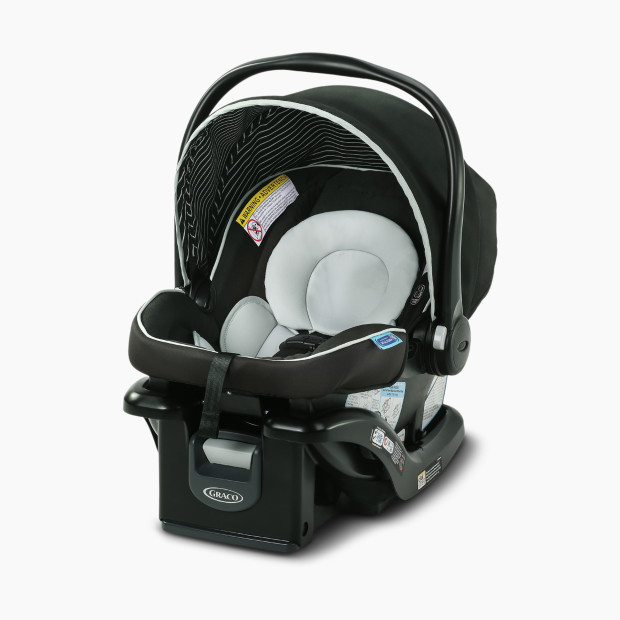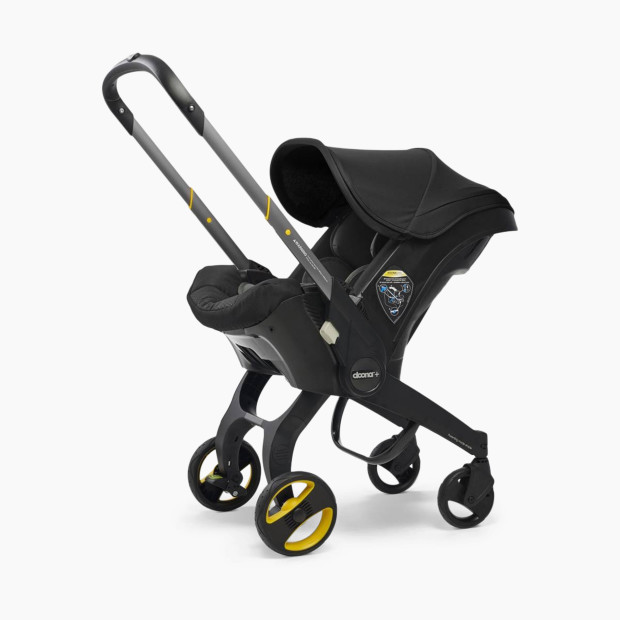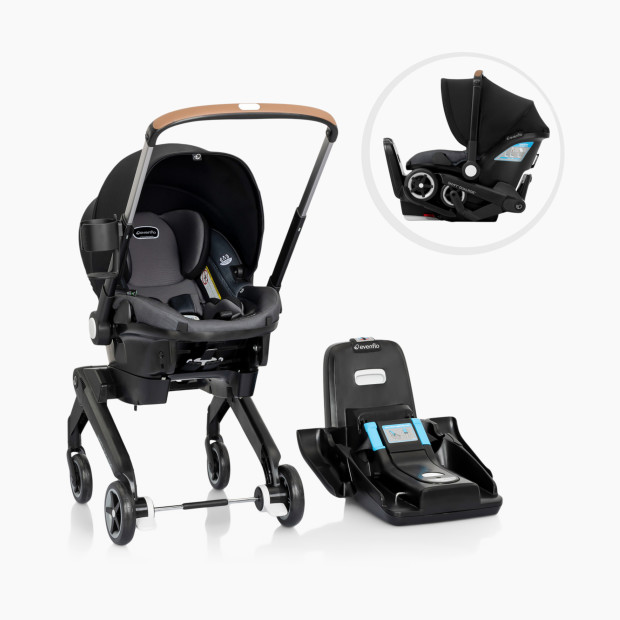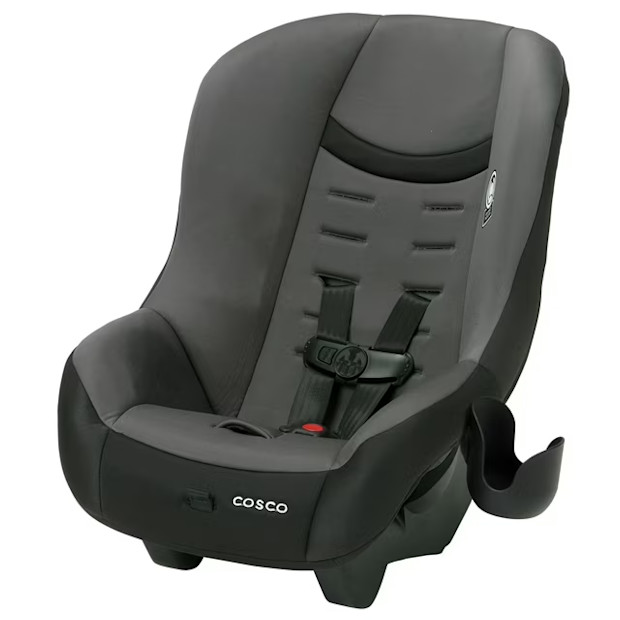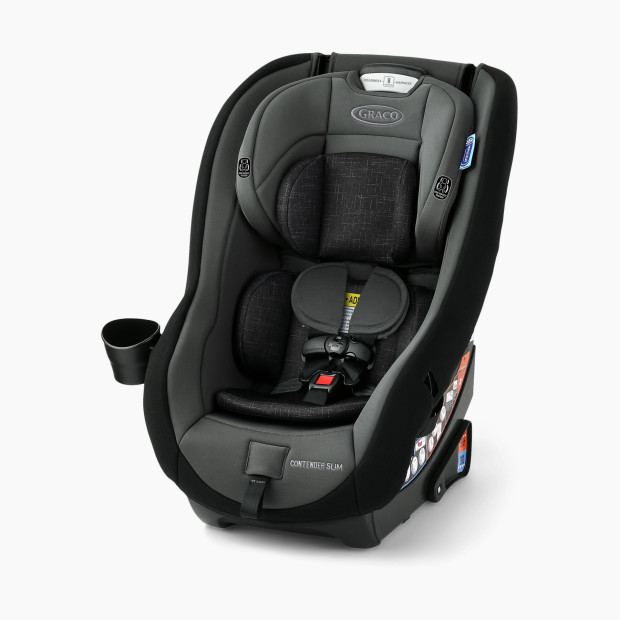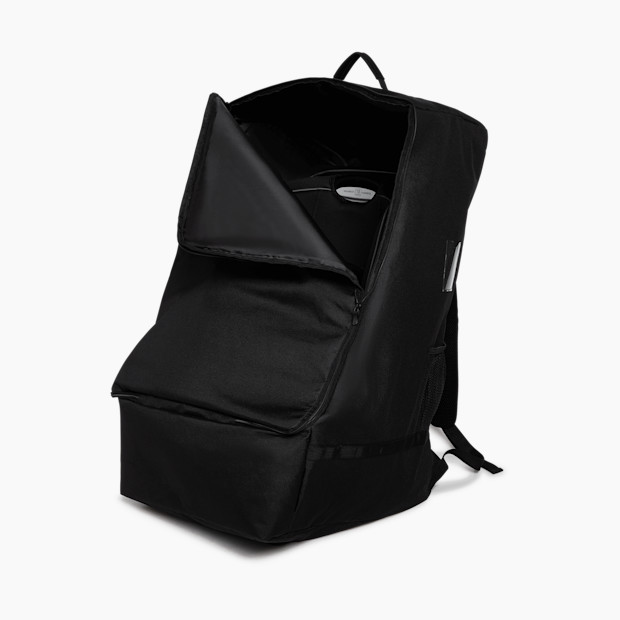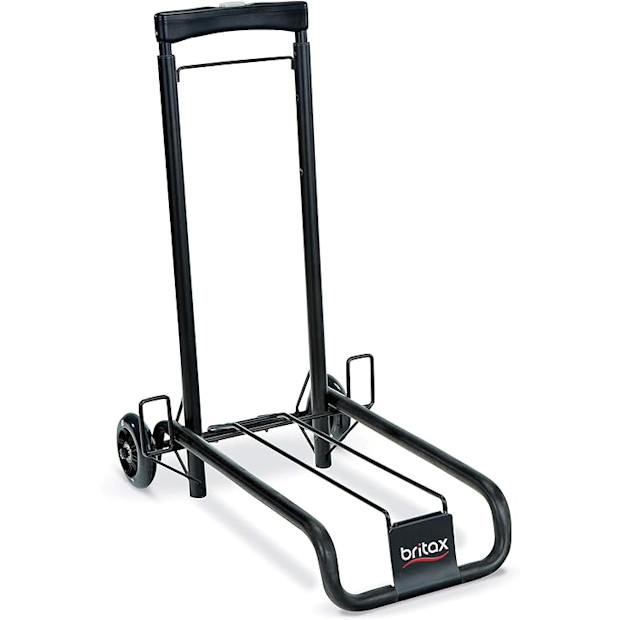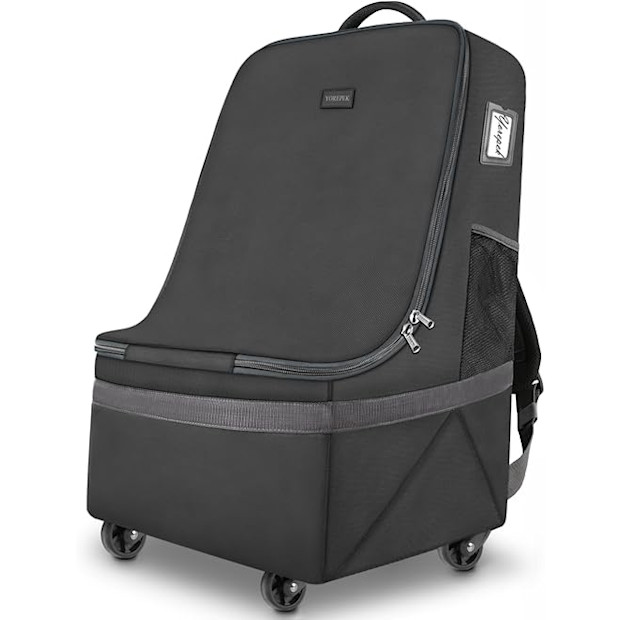
How to Travel Safely with a Car Seat
✈️ Planes,🚉 trains, 🚙 rental cars + rideshares—your guide to the (often overwhelming) logistics of traveling with a car seat.

By Jen LaBracio, CPST
Fact Checked by Shannon Vestal Robson
In This Article
The new parent learning curve can feel pretty steep, but never more so than when you’re about to set off on a trip with your baby or a toddler, especially for the first time. And as a Child Passenger Safety Technician (a CPST, a specially trained car seat educator), one of the most common questions I hear from (frazzled) parents is:
“How do I travel with my child’s car seat?”
While I can’t promise traveling with a car seat will be the most seamless thing you’ll do as a new parent, a little knowledge goes a long way. With the right safety information and a how-to on logistics, it’s all a lot less daunting.
I teamed up with Melissa Conn, CPST, world traveler, mom of two and founder of the Travel Car Seat Expert to demystify traveling with a car seat and explain how to keep your child—and your car seat—safe when you’re away from home.
✈️ Car Seat Travel by Plane
Let’s get the most confusing one out of the way first: traveling by plane with your car seat. If you’re flying with your baby or toddler, you have a couple of options:
Purchase a seat for your child, bring your car seat along and use it on the plane
Check your car seat either at the gate or as baggage and put baby on your lap
Most US airlines don’t require a separate seat for children under two years old (they can fly with an adult as a lap infant) and they don’t require a child to sit in a car seat while riding on a plane. But buying your child their own seat and bringing your car seat along is the safest choice for a few reasons.
Both the Federal Aviation Administration (FAA) and the American Academy of Pediatrics recommend using your car seat on an airplane. CPSTs also strongly encourage families to fly with their own car seat whenever possible.
“Severe turbulence has only been increasing in recent years and there can be runway incidents like short stops that exert enough force to make it nearly impossible for a parent to hold their child safely,” explains Conn. “Young travelers can be ejected from their parents’ arms (or a too-large seatbelt) at worst or hit their heads hard on the seat in front of them.”
Damage to your car seat is also a concern. A car seat that’s checked with other luggage or that’s gate-checked can easily get banged around or even dropped. Sometimes that damage will be visible, but oftentimes it will be harder to spot—and even the slightest damage often means the car seat is no longer safe to use.
Most children start to achieve a safe seat belt fit on an airplane around 40 pounds, so CPSTs recommend children use a car seat until they reach that weight.
Flying with an infant car seat
If your child uses an infant car seat, you’re in luck—almost all infant seats work well for travel since they’re compact, fairly lightweight and feature a carry handle. If your seat is part of a travel system (a stroller and a car seat that click together), traveling with your seat is even easier, as you can wheel it right up to the gate in your stroller.
Most infant car seats are FAA-approved for aircraft use, but you’ll want to confirm before your trip. Look for a label on your seat that reads: “This restraint is certified for use in motor vehicles and aircraft travel.”
Once you’re on the plane, use the seat’s lap belt to secure the car seat in the rear-facing position. Most car seat manuals have a section on how to secure your car seat in an aircraft, so be sure to follow those instructions carefully.
Flying with a convertible car seat
Most children outgrow their infant car seat between 12 and 18 months. Once you’ve made the switch to a convertible seat, traveling with your seat gets a little more difficult—but it’s still completely doable.
Since most convertible car seats are heavy and bulky, investing in a travel-friendly option is a good idea if you plan to fly at least a few times a year. Weight is the most important feature to consider when choosing a travel-friendly convertible: the lighter the better.
“I really encourage families to bring a lightweight car seat when they travel,” says Conn. “It's easier to handle walking through the airport, going through security and then either carrying it to your seat on the aircraft or going down the stairs to gate check.”
And like on an infant seat, you’ll also need to look for that same FAA approval label to ensure your seat is cleared for aircraft use.
Since convertible car seats don’t click into strollers, many parents are stumped as to how to get around the airport with one. The good news is it’s easier than you might think. Here’s what to do, according to Conn:
If your seat is light enough, buckle the harness and carry it by hand.
Wear your baby or toddler in a baby carrier and rest the car seat on your stroller (sometimes a bungee cord or a luggage strap helps). You can also strap the seat to a rolling suitcase.
Use a folding luggage cart or a car seat travel cart.
Use a car seat backpack.
Once you’re on the plane, install the seat either rear- or forward-facing (depending on your child’s height, weight and age) using the plane seat’s lap belt.
Travel-Friendly Convertible Car Seats and Accessories
Checking your car seat
If you can’t take your car seat on the plane with you, you have two options: checking your seat at the gate or as checked baggage. But checking your car seat does come with some risks.
You won’t have a safe way to restrain your child on the plane.
Your car seat might be damaged by the airline. (Airlines aren’t known for being particularly gentle with luggage, car seats included. And a car seat needs to be replaced after one impact.)
Your car seat may not make it to your final destination.
If you do decide to check your car seat, your biggest priority should be protecting the seat as much as possible. Here’s what to do:
Gate check rather than baggage check. “While my recommendation is always to use the car seat on board if you can, between baggage check and gate check I personally lean toward gate check. That minimizes the risk that it'll be left at your departure airport and the time it's out of your control,” explains Conn.
Use a padded car seat bag to protect the seat and absorb impact. “Try to make it as easy for the ramp crew to carry it down the stairs as possible. It's better for their safety and decreases the likelihood that it will be dropped.”
If you are checking the seat with your luggage, the safest option is to use a sturdy box like the one it came in. “You may want to break the box down when you arrive and stick it in the trunk of your rental car, then grab scissors and packing tape to reassemble for your return flight.”
Once you arrive at your destination, it’s important to check over the car seat to look for any signs of damage that may have occurred during transit.
Check the car seat’s harness straps, adjuster strap, LATCH and buckles.
Check for stress marks on the seat’s shell. (They’ll look like lighter streaks on a dark plastic shell.)
Check the foam on the headrest and sides of the seat.
If you see any damage (or anything else you’re not comfortable with), reach out to your car seat’s manufacturer immediately. They’ll instruct you on what to do and whether or not it’s safe to continue to use the seat.
🚘 Car Seats in a Rental Car or Rideshare
You’re likely to find yourself in a rental car or a rideshare at least a few times during the car seat years. Following a few simple guidelines will keep your child safe.
Car seats in rental cars
Most rental car companies also offer car seat rentals—but we don’t recommend using them.
“Renting a car seat is almost always my last choice for families,” cautions Conn. “I've just seen too many bad situations.”
Rental car seats are often worn out and damaged. Many are entry-level models that are very cumbersome to use. And very often, the rental car company won’t have a seat that’s appropriate for your child’s age, size and developmental level.
“I've had a [parent] share that the only options she was given for her two-year-old were an infant car seat or a booster seat—the office had run out of convertible car seats entirely,” says Conn. “The reality is that you never know what you're going to get with a rented car seat.”
Whenever possible, bring your own car seat when renting a car. If that’s not an option, consider shipping an inexpensive seat to your destination.
Car seats in rideshares
Just like in your own car, your child needs to be secured in a car seat or booster seat when traveling in a rideshare or taxi. (Even for a short ride!) While some rideshare companies do offer vehicles with car seats (Uber Car Seat, for example), the service is only available in certain metro areas and whether or not you’ll be able to book one when you need it is luck of the draw. The safest bet is to use your own seat whenever possible.
If your child rides in an infant car seat, you can install it using the vehicle’s seat belt instead of lugging the base along. Don’t wait until your first Uber ride to try out this installation method, though. Consult your manual, watch installation videos and practice beforehand so you’ll be less stressed in the moment. And don’t rush; most rideshare drivers will be happy to wait a few extra minutes to let you install a car seat.
Since convertible car seats are heavier and bulkier than infant seats, it’s worthwhile to invest in a lightweight, travel-friendly option as your child grows if you know you’ll be using rideshares frequently. (Any of the lightweight travel seats recommended for air travel above will also work in a rideshare.)
For an older child, consider something like the Wayb Pico, the RideSafer Travel Vest or an inflatable booster seat. All are safe options when used properly; just be sure your child meets the height, weight and developmental requirements of the seat if you’re considering one.
🚆Car Seat Travel by Train
Trains, both long-distance passenger trains and metro lines like subways, are a very safe way to travel, especially in comparison to traveling by car. Since trains don’t have seat belts or LATCH, there’s no way to install a car seat on a train. Your child can sit either on your lap or in their own seat.
If you’re traveling with a baby in a rear-facing infant car seat, you can use it on the train, but it should be placed on the floor in front of you rather than on the seat. Be sure to fasten and tighten the harness; a child should be properly secured in an infant car seat at all times, even when it’s not in use in a car.
If you’ll need a car seat at your destination, you can transport your car seat on a train either by carrying it or by using a luggage cart, luggage strap or car seat bag/backpack. Long-distance trains offer luggage storage. You can also store your car seat above your seat on the luggage rack or at your feet if it fits.
Expert Sources
Babylist content uses high-quality subject matter experts to provide accurate and reliable information to our users. Sources for this story include:
Melissa Conn, CPST, world traveler, mom of two and founder of the Travel Car Seat Expert

